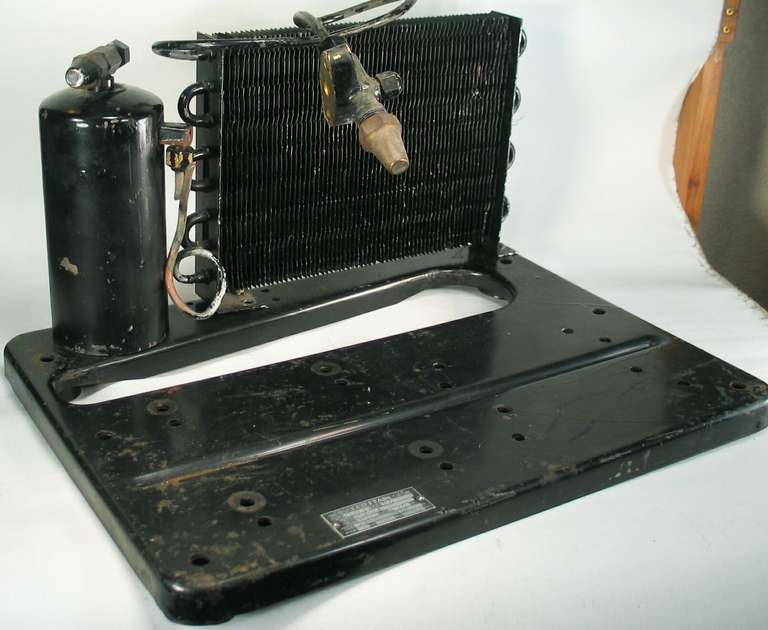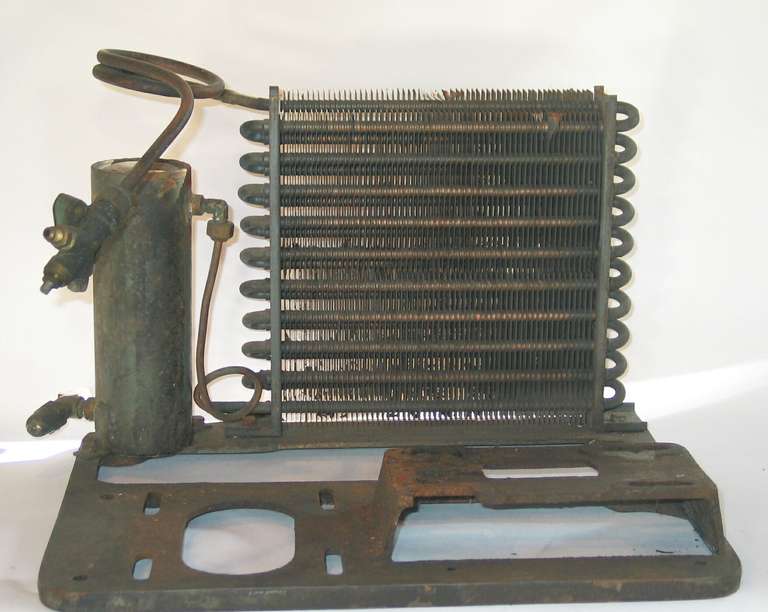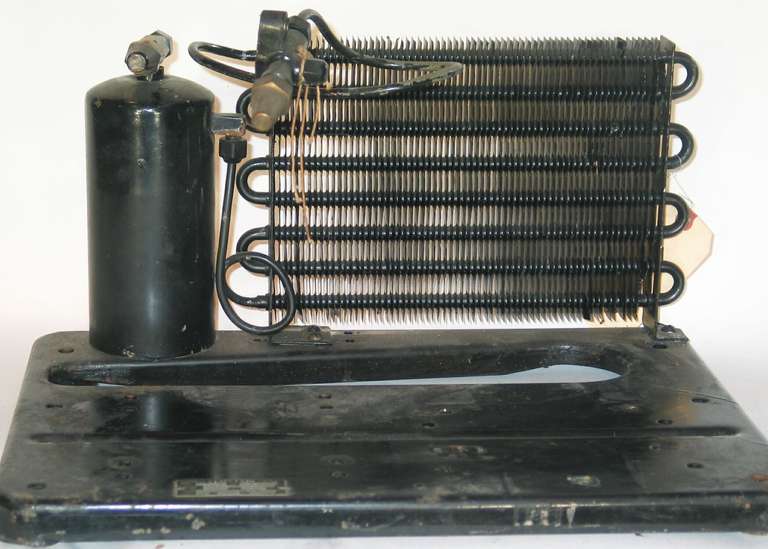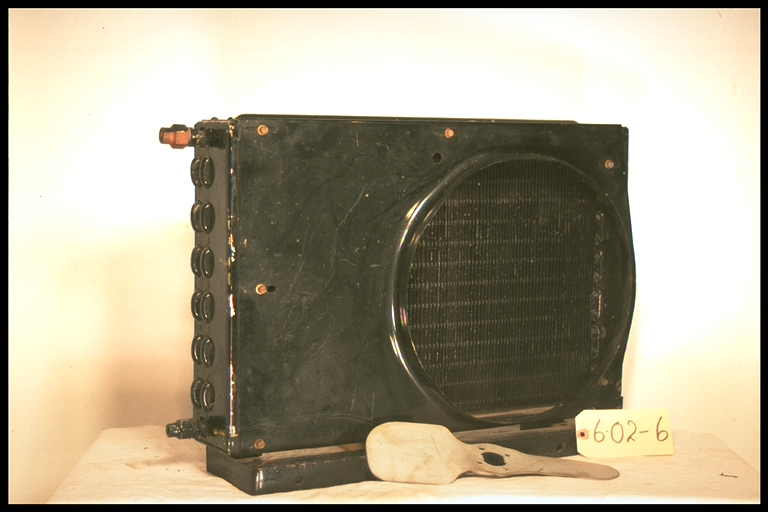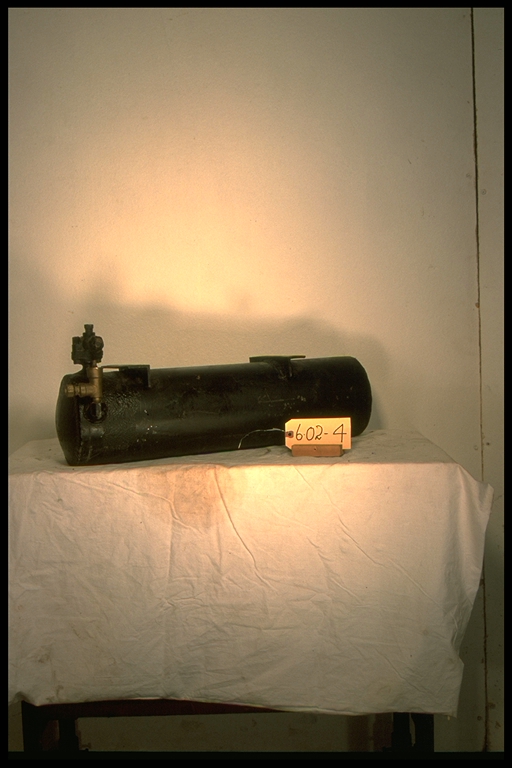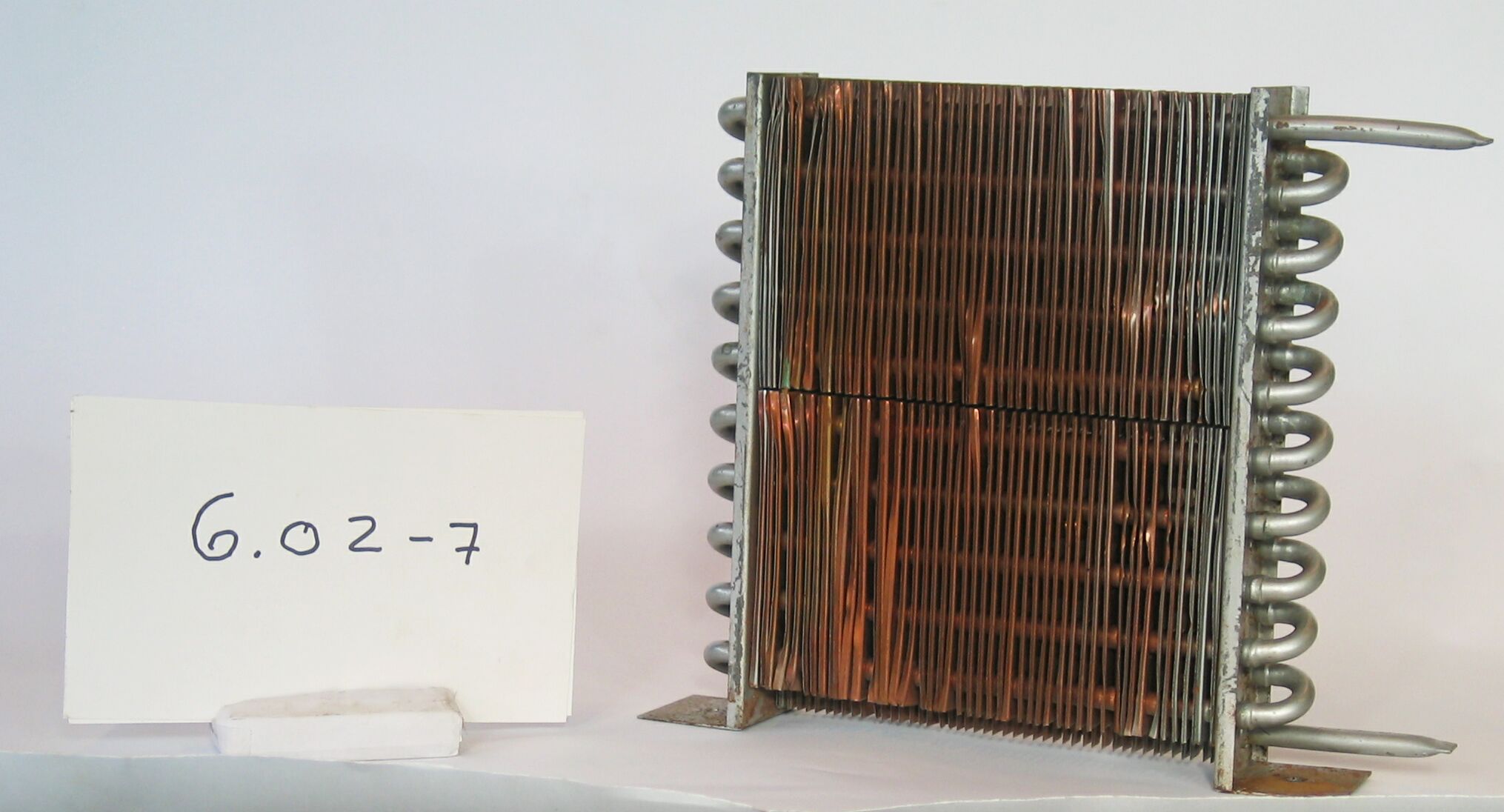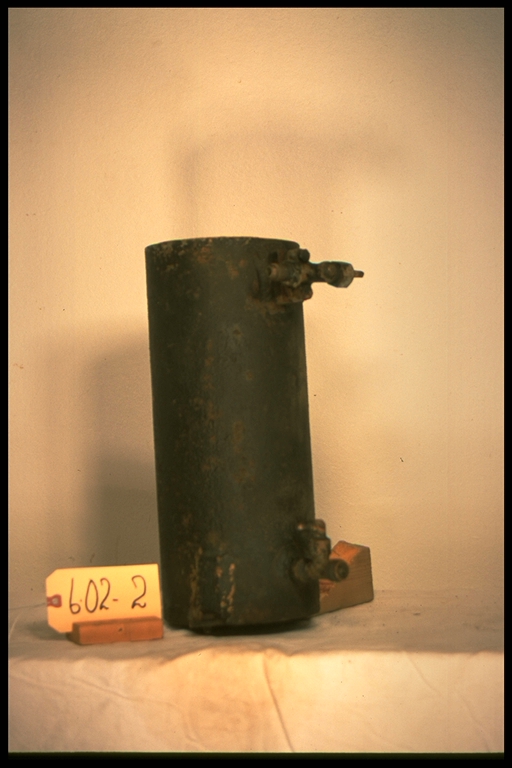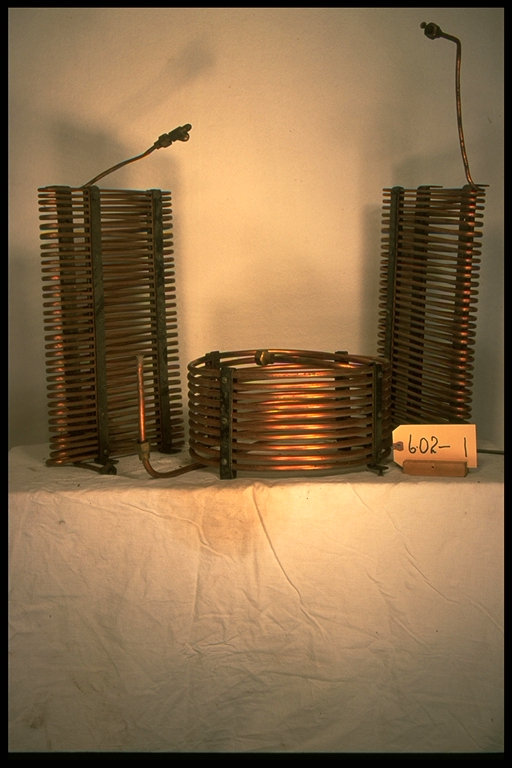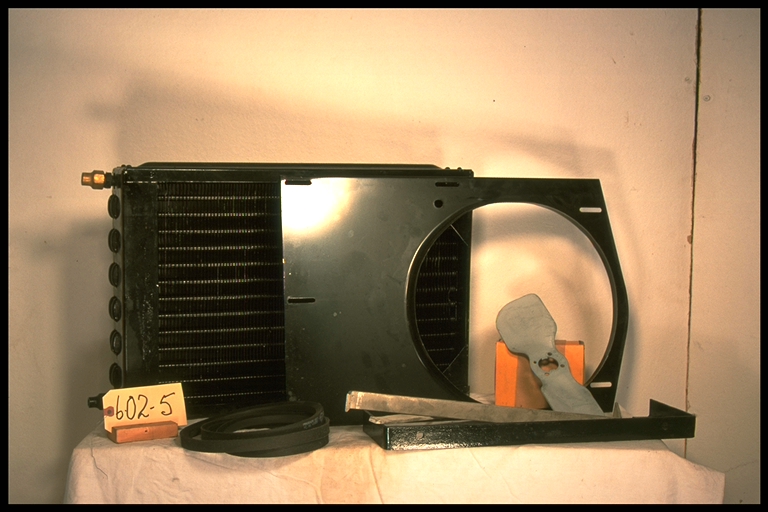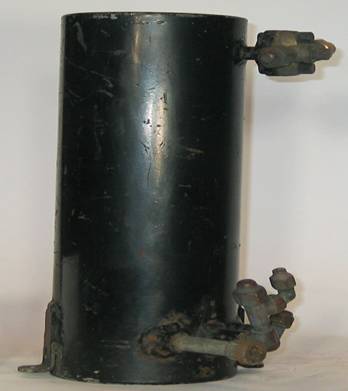6.02-8: Chieftain 1951 Air-Cooled Condenser - Receiver
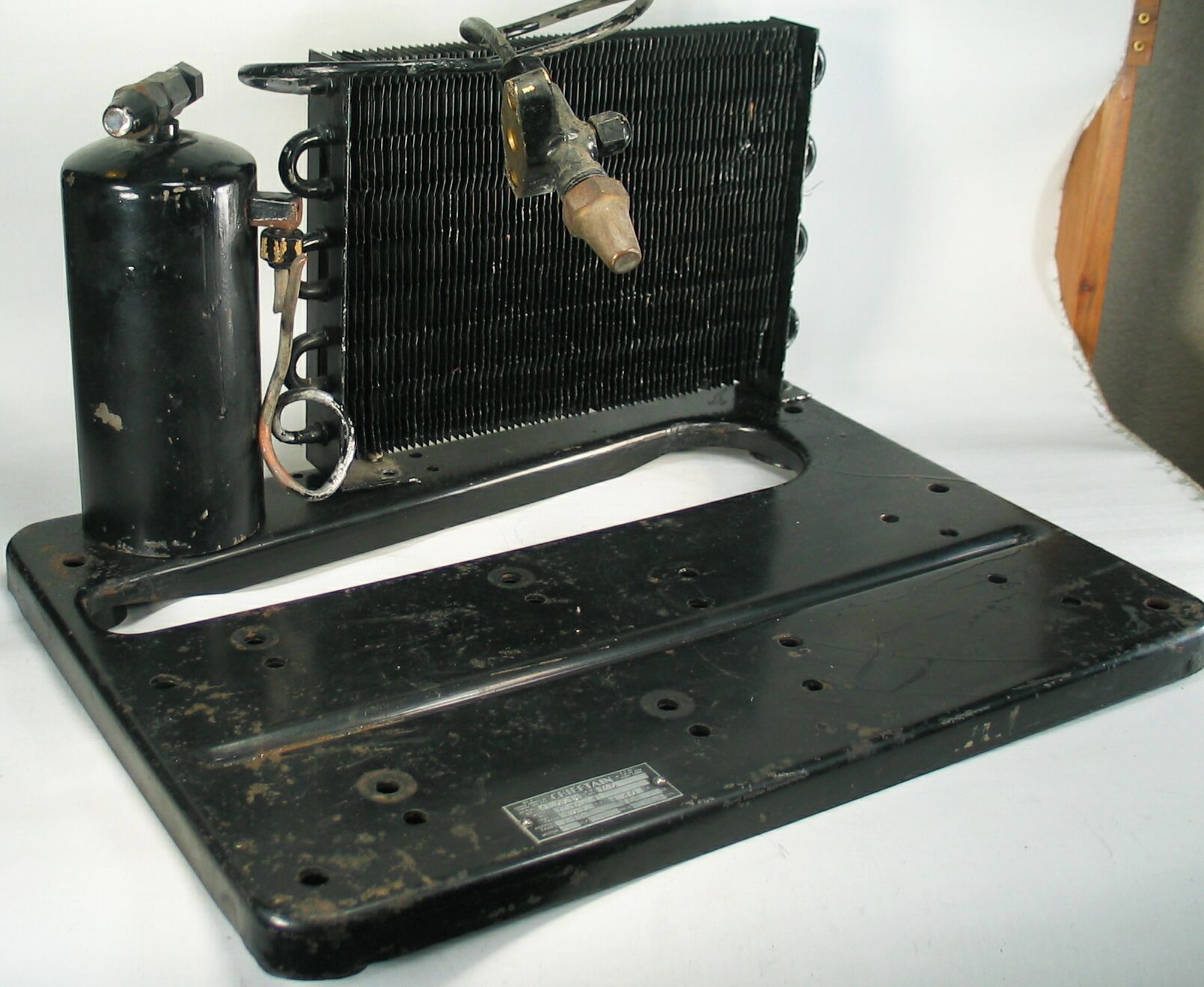
| HHCC Accession No. 2003.070 | HHCC Classification Code: 6.02-8 |
|---|
Description:
An all steel, mid 20th century, forced air, refrigerant condenser and receiver assembly, representing a world change and an epic period of transition in the engineering design and construction of refrigeration machines, making possible a new range of offerings by Canadian grocers, bakeries and restaurateurs. It was engineered for a new generation of non-noxious, non-corrosive refrigerants, the chlorinated hydrocarbons, by a new generation of equipment manufacturers, Chieftain, Tecumseh Products, 1951.
Group:
6.02 Refrigerating and Air Conditioning Condensers and Receivers - Commercial
Make:
Chieftain
Manufacturer:
Tecumseh Products, Tecumseh, Mich, USA
Model:
FS16-1L
Serial No.:
4L9513
Size:
Over base plate,19x14x 10’h
Weight:
16 lbs
Circa:
1951
Rating:
Exhibit, education, and research quality, demonstrating the world shift in the design and construction of refrigerant receivers and condensers for small, FHP, commercial refrigeration machines, at mid century, now engineering exclusively for chlorinated hydrocarbon refrigerants [methyl chloride and Freon 12]
Patent Date/Number:
US Patent, 2191326 (1940), others pending
Provenance:
From York County (York Region) Ontario, once a rich agricultural hinterlands, attracting early settlement in the last years of the 18th century. Located on the north slopes of the Oak Ridges Moraine, within 20 miles of Toronto, the County would also attract early ex-urban development, to be come a wealthy market place for the emerging household and consumer technologies of the early and mid 20th century.
This artifact was discovered in the 1950’s in the used stock of T. H. Oliver, Refrigeration and Electric Sales and Service, Aurora, Ontario, an early worker in the field of agricultural, industrial and consumer technology.
Type and Design:
The assembly is mounted on its own condensing unit base pan, engineered in lightweight pressed steel, and equipped for rubber isolating vibration mountings. The base would accommodate the Chieftain 1300 series compressor, the ‘work horse’ of the period [see classification group 5.00], and a FHP, resilient mount electric motor, see catalogue reference.
Construction:
Material:
Special Features:
Accessories:
Capacities:
Performance Characteristics:
Operation:
Control and Regulation:
Targeted Market Segment:
Consumer Acceptance:
Merchandising:
Market Price:
Technological Significance:
By the 1940’s times had changed and changed greatly, as a result of the introduction of hydrocarbon refrigerants, largely at the time, methyl chloride and Freon 12. The new refrigerants were non-noxious and non-corrosive, allowing the use of less expensive steel tubing for condensers. The thermodynamic properties of the refrigerants required less volume of liquid in circulation, leading to smaller refrigerant receivers. The design of pressure vessels was also better understood allowing for safe, lighter weight, more economic and environmentally safe construction.
By way of contrast see item 061, classification code 6.02-2, for a receiver for sulphur dioxide, in rolled steel plate, 7 inches dia, 16 inches high, weighing 25 lbs, compare, 3 inches in dia, 7 inches high, in pressed steel, weighing 3 lbs for F12, both of similar horsepower.
Hard on the heals of this epic change in the nature of refrigeration machines, based on the development of hydrocarbon refrigerants, was another engineering revolution now well on the way and gathering momentum. So called ‘conventional’ refrigeration machines, open systems with separate motor and belt driven compressor would soon largely disappear, in FHP capacities. They would be replaced by the end of the 1950’s by ‘hermetic’ units and compressors, in which the motor and compressor were sealed in a single enclosure, making possible yet another generation of lighter weight, more efficient refrigeration machines [see item 039, classification group 4.01-10]
Industrial Significance:
Socio-economic Significance:
Socio-cultural Significance:
Donor:
G. Leslie Oliver, The T. H. Oliver HVACR Collection
HHCC Storage Location:
Tracking:
Bibliographic References:
RESCO, Refrigeration Supply Co. Ltd, London Ontario, Catalogue No. 6, 1951, P.3
- Marshall Refrigeration Co., Toronto, Catalogue No. 30,
References
